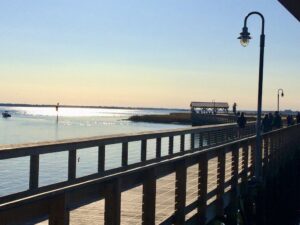It’s Friday! What are you doing this weekend? There are so many wonderful reasons to go outside! Many of them are not related to math, but math is everywhere! What did you think when you saw the hibiscus above? Did you notice the beautiful colors? Did you notice the patterns with five? Many of you may challenge your students to go outside for math lessons. You might have a scavenger hunt for shapes, count objects, etc. Those can be fun and beneficial activities!

As I was at the garden, however, I started thinking of questions we could ask that required more thinking. For example, what questions could you ask about the picture above? Think about your question. Does it require basic skills or critical thinking? I think we can start by asking children what they notice and what they want to know, similar to a three-act task. Sometimes, however, we might use questioning to develop or strengthen conceptual understanding.

How is the fern frond similar to the leaves of the rose? What questions could you ask? After students have explored what they notice and wonder, consider this question: If the stems and leaves of the rose bush are undamaged and follow a pattern, what possible number of leaves could it have? Could there be ten leaves on a stem? Why or why not? Some students may notice a pattern. Students who understand the concept of odd and even will recognize the rose stem, if undamaged, will have an odd number of leaves? Why? Is this true of the frond? If you are unsure, what one piece of information do you need? (The frond divisions are called pinnae. I just learned that today!) What questions could you ask about the fern? What information would you need to determine if the number of pinnae is odd or even? This discussion could help students who have just memorized a rule for finding odd and even numbers.

The posts on the railing of this beautiful bridge are squares. Yes, you could count squares. More challenging, however, would be to ask the total number of rectangles in a given section of the railing. Also, ask about the shadows. What possible shapes could be created from the shadow of one square in the railing? Explain your reasoning.
I hope you are able to spend time outside this weekend! Spending time outside always inspires me. Try it! Not only will you love spending time outside, I know you will be inspired to think of new questions! You could challenge your students to a conceptual, rather than concrete, scavenger hunt! Where do you see examples of odd and even numbers? Where do you see examples of multiplication?
What are some questions about nature that require conceptual understanding or critical thinking that you have used or would like to use? Please share your ideas!


Recent Comments